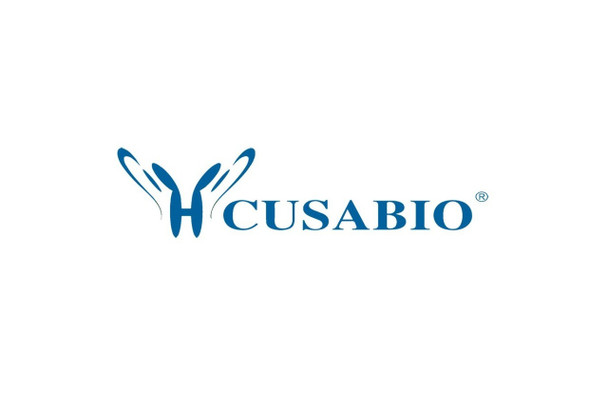Cusabio Polyclonal Antibodies
ITGB1 Antibody | CSB-PA034125
- SKU:
- CSB-PA034125
- Availability:
- 3 to 7 Working Days
- Size:
- 100ul
Description
ITGB1 Antibody | CSB-PA034125 | Cusabio
ITGB1 Antibody is Available at Gentaur Genprice with the fastest delivery.
Online Order Payment is possible or send quotation to info@gentaur.com.
Product Type: Polyclonal Antibody
Target Names: ITGB1
Aliases: FNRB; MDF2; VLAB; MSK12; ITGB1
Background: Integrins a-1/beta-1, a-2/beta-1, a-10/beta-1 and a-11/beta-1 are receptors for collagen. Integrins a-1/beta-1 and a-2/beta-2 recognize the proline-hydroxylated sequence G-F-P-G-E-R in collagen. Integrins a-2/beta-1, a-3/beta-1, a-4/beta-1, a-5/beta-1, a-8/beta-1, a-10/beta-1, a-11/beta-1 and a-V/beta-1 are receptors for fibronectin. a-4/beta-1 recognizes one or more domains within the alternatively spliced CS-1 and CS-5 regions of fibronectin. Integrin a-5/beta-1 is a receptor for fibrinogen. Integrin a-1/beta-1, a-2/beta-1, a-6/beta-1 and a-7/beta-1 are receptors for lamimin. Integrin a-4/beta-1 is a receptor for VCAM1. It recognizes the sequence Q-I-D-S in VCAM1. Integrin a-9/beta-1 is a receptor for VCAM1, cytotactin and osteopontin. It recognizes the sequence A-E-I-D-G-I-E-L in cytotactin. Integrin a-3/beta-1 is a receptor for epiligrin, thrombospondin and CSPG4. a-3/beta-1 may mediate with LGALS3 the stimulation by CSPG4 of endothelial cells migration. Integrin a-V/beta-1 is a receptor for vitronectin. Beta-1 integrins recognize the sequence R-G-D in a wide array of ligands. Isoform beta-1B interferes with isoform beta-1A resulting in a dominant negative effect on cell adhesion and migration (in vitro) . In case of HIV-1 infection, the interaction with extracellular viral Tat protein seems to enhance angiogenesis in Kaposi's sarcoma lesions. When associated with a-7/beta-1 integrin, regulates cell adhesion and laminin matrix deposition. Involved in promoting endothelial cell motility and angiogenesis. May be involved in up-regulation of the activity of kinases such as PKC via binding to KRT1. Together with KRT1 and GNB2L1/RACK1, serves as a platform for SRC activation or inactivation. Plays a mechanistic adhesive role during telophase, required for the successful completion of cytokinesis
Balzac F., Retta S.F., Albini A., Melchiorri A., Koteliansky V.E., Geuna M. J. Cell Biol. 127:557-565 (1994)
Chuang N.N., Huang C.C.Biochem. Soc. Trans. 35:1292-1294 (2007)
Pellinen T., Tuomi S., Arjonen A., Wolf M. J. Dev. Cell 15:371-385 (2008)
Isotype: IgG
Conjugate: Non-conjugated
Clonality: Polyclonal
Uniport ID: P05556
Host Species: Rabbit
Species Reactivity: Human, Mouse, Rat
Immunogen: Peptide sequence around aa.790~794 (V-V-N-P-K) derived from Human Integrin b1 (CD29) .
Immunogen Species: Human
Applications: ELISA, WB
Tested Applications: ELISA, WB;WB:1:500-1:1000
Purification Method: Antibodies were produced by immunizing rabbits with synthetic peptide and KLH conjugates. Antibodies were purified by affinity-chromatography using epitope-specific peptide.
Dilution Ratio1: ELISA:1:2000-1:10000
Dilution Ratio2: WB:1:500-1:1000
Dilution Ratio3:
Dilution Ratio4:
Dilution Ratio5:
Dilution Ratio6:
Buffer: Supplied at 1.0mg/mL in phosphate buffered saline (without Mg2+ and Ca2+), pH 7.4, 150mM NaCl, 0.02% sodium azide and 50% glycerol.
Form: liquid
Storage: Upon receipt, store at -20°C or -80°C. Avoid repeated freeze.
Initial Research Areas: Signal Transduction
Research Areas: Cancer;Metabolism;Signal transduction






